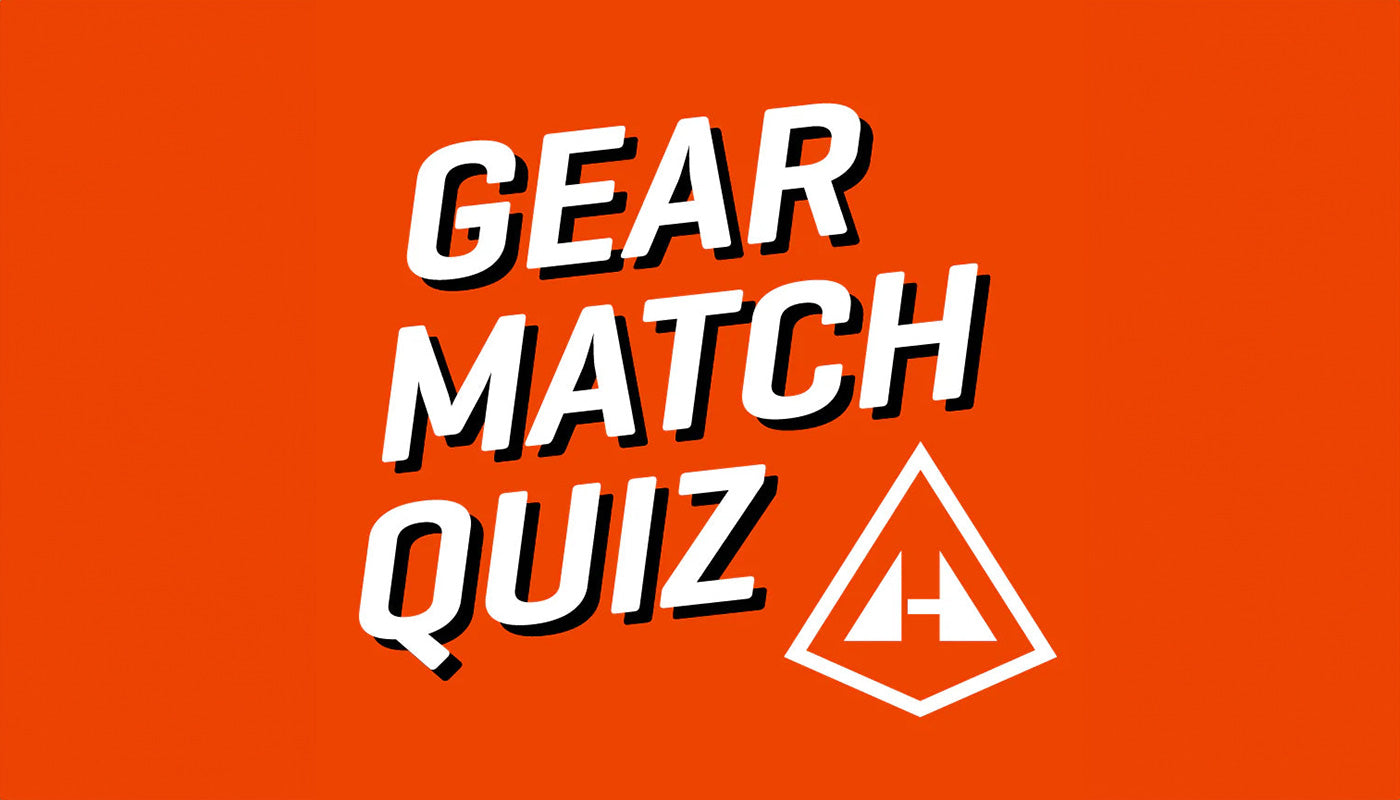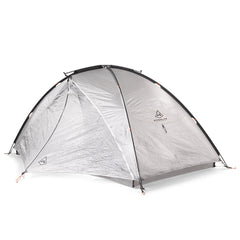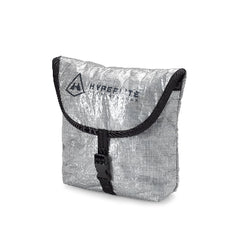The Trailhead - IG - @plbugg
Stepping next into the Shakedown 2.0 arena is our friend and frequent Trailhead contributor, Peter Bugg. As a keen learner and relentless "best-kit-for-the-task-at-hand" modifier, there's always a lot to unpack from his gear lists. No, wait - pack is probably more fitting. Let's see what he's up to, shall we?

BACKPACK
The Southwest 55 was my introduction to Hyperlite. After many two- and three-day weekend-warrior backpacking trips, two friends and I did five days in the Sierra Nevadas in 2018 and drastically overpacked. When we came home, I started doing some research and landed on this pack. Since then, I’ve added a NorthRim 70 and a Porter 55 to the quiver, and I regularly lend out my packs when bringing friends out with me. I like them all, but if I could only have one pack, I think the Southwest 55 would be it. It’s versatile enough for a lot of different outdoor pursuits - light enough for a day trip, and voluminous enough for seven+ days with a bear can. When friends ask me which pack I would recommend, the Southwest 55 is it.

SLEEPING BAG / QUILT
Most of my adventures are in the desert southwest, so I often don’t need a super warm sleeping bag. The HMG 40º Quilt has been an excellent addition to my kit for the last year or so. It keeps me comfortable on spring and fall desert nights when a 20º bag would be overkill, is more than a pound lighter than most mummy options, and packs down super small. It allows me to have more space and energy to carry water or otherwise just lighten my load to make my days easier.

STUFF SACKS / PODS
Stuff sacks and Pods are the behind-the-scenes heroes that don’t get the recognition they deserve. Organizational supplies are not as sexy as bigger-ticket items like backpacks, tents, and sleeping bags, but they make your trip much more enjoyable, and pods are the best option I’ve found. In addition to helping you quickly find what you’re looking for, pods add an additional layer of weatherproofing, which can be especially helpful when packrafting or swimming through desert potholes. Zipper-top pods allow much easier access to their contents than traditional stuff sacks, and the Side Entry Pod is perfect for sleeping bags, puffies, and other bulkier items that you won’t need throughout the day. The Camera Pod is my go-to method for carrying my DSLR, providing the perfect balance of access and protection while moving and at camp. Finally, if you want to add some color to your in-pack system, I love the options from Space Bear bags and only wish they had more to choose from.

TENTS / SHELTERS
My Ultamid 4 was the second large HMG purchase I made after my pack, and I have spent about 45 nights in it in a wide variety of setups and conditions. I’ve used the tarp on its own as an emergency shelter during hailstorms in the Sierras and just the Mesh Insert during buggy nights on the Olympic Peninsula. When temperatures drop, packing four bodies into the tent and insert combo has kept me nice and toasty while still providing enough space to wake up and pee without bothering my tentmates. Sheltering four full-size humans for three pounds is a serious weight-savings, and using trekking poles for the skeleton also makes packing noticeably simpler.
My brother has an overlanding friend who justifies a lot of his customizations with, “First of all, it’s not stock, so that’s cool.” If you wanted to add a few aftermarket touches to the UM4, I have some suggestions. Four internal pockets for phones, glasses, headlamps, etc., will make you and your tentmates’ lives easier in the middle of the night, and for less than 1 oz, I think it’s worth it. On a windy night, using the guylines helps cut down on noise and eases the mind, allowing for a better night’s sleep. However, on a still evening, it can be annoying to have the extra strings dangling. One option is to keep the lines stored in the stuff sack around some cord winders, which will keep them accessible and easy to deploy when needed.

Finally, I was recently able to acquire an Unbound 2, and while I’ve only spent three nights in it so far, I’m excited to use it more in the near future. It’s obviously not as large as the UM4, but that can also be a boon. It packs down even smaller than its bigger cousin, doesn’t require as large of a footprint, and I’m optimistic that its lower head height will be a little quieter in a stiff wind.

SLEEPING PADS / PILLOWS
I’ve recently been using the Zlite Sol and a XTherm pad, both by Therm-a-rest. When it’s really cold, I’ll use both together for maximum warmth. I used to put the closed cell pad underneath the inflatable to help avoid punctures, but I’ve found that if the ground is soft enough, I’m warmer with the inflatable underneath and the closed cell closer to my body.
If I don’t need both pads, I’ll usually use the inflatable on its own. Partly because it’s more comfortable, but I also have been focusing more and more on space savings, and the inflatable definitely wins out on that front.
One situation where I’ll opt for the closed cell pad over the inflatable is when I’m on a trip with packraft crossings. I’ll put the foam in the bottom of my raft to insulate against cold water and also pad against any sharp objects I might cross over. A final benefit of the Zlite is that it’s really easy to unclip from the outside of my pack during longer rest breaks and use it as a beefy sit pad or luxurious daybed. In a pinch, it can also be used as a windbreak when it’s time to cook.

STOVES
There are a lot of good water-heating options to choose from, but my current go-to stove is the Jetboil Stash. In addition to boiling water very quickly, the form factor makes this system very packable and also more ergonomic to eat out of and wash compared to taller, narrower vessels. One small detail I particularly love is that the plastic lid has a lip that holds your fuel canister in place. Not only does this prevent clanking inside your pack, but it also creates a perfect spot to keep a lighter, which is easier to replace and more reliable than a piezo igniter.

KITCHEN COOKWARE
I will add my name to the list of people who love a long-handled titanium spoon. I also just purchased the Ultralight Backpackers Combo from HYKLYF on etsy. The Pika bowl is much easier to use for measuring water than the markings on the inside of any pot I have used, and it packs down flat so it takes up zero space.

HYDRATION VESSELS
I’ve used bladders with hoses in the past, but I find that I don’t like not knowing how much water I have left, and I find sucking on the mouthpiece exhausting. When I’m tired, I much prefer to pour liquid straight down my gullet. My main water container is a classic 1L Smartwater bottle, but I’ve customized mine with the Bottle Genius sticker from HYKLYF to have volume measurements. I also usually carry a 2L collapsible platypus bottle, which is slightly harder to handle, but packs down small when not in use. If I need to do a larger water carry, or let sediment settle overnight before filtering, I’ll bring an MSR DromLite reservoir. The 4L version fits perfectly inside a 40L or 55L pack, and the 6L works well with a 70L pack.
WATER TREATMENT
Any water filter system will eventually clog, but I have found that until it does, I prefer the Katadyn BeFree filter for its high flow rate. Compared to boiling water or using drops, it also allows you to drink water right away instead of waiting. I never hike alone, so our group will always have one or two backup options just in case. Another filter is good, but Aquamira is probably cheaper and lighter and will work even when the water has a lot of sediment.
APPAREL
As I moved towards lighter gear on my back, one glorious side effect has been the ability to change my footwear. I switched to trail runners about four years ago, and now my feet don’t have blisters, blackened toenails, or the extreme need to breathe fresh air that I had grown accustomed to in hiking boots.

Another change I’ve made in the past five years is that I almost always wear a sun hoody. In addition to keeping the sun off, the lightweight hood can be soaked in water to create an evaporative cooling system that works well in the arid desert. I’ve tried a few different brands and styles, and here is what I would recommend looking at before making a purchase:
• Is the material lightweight / does it breathe well?
• How does the hood / face opening fit your head?
• Do you want thumb holes or not? How are they oriented? Will you need to twist the sleeve to use them, and does this put a seam in the middle of your palm?
One of my luxury items is a pair of Capilene boxers for sleeping. Clean undies that provide adequate ventilation allow me to get a better night’s sleep and are a great way to help stave off the trail funk.

HEADLAMPS
I use an older model headlamp that is no longer produced, probably because the double, triple, and hold click options were too complicated to remember / figure out. It does the job, but here’s what I would look for if purchasing a new lamp.
• Red light - not just because it’s better for your (and your group’s) night vision, but also because it doesn’t attract insects as much.
• Ability to change brightness - you don’t need as much light reading in camp as you do trying to find the trail after dark.
• Adjustable light angle - I really like being able to point it down around camp and higher when I’m on the trail.
• Reliability. Pick a trusted brand like Petzl or Black Diamond.
MULTI TOOLS
The Petzl Spatha is my current knife pick when I’m canyoneering and need to be able to cut rope or webbing. If I’m not planning on anything technical, I’ll usually bring my Kershaw Leek, given to me by a good friend, but that’s more out of sentimentality than need. A much smaller blade like the Swiss Army Classic SD will usually suffice for my needs. On any overnight trip, I’ll always carry a nail clipper to make sure my feet stay as comfortable as possible.























